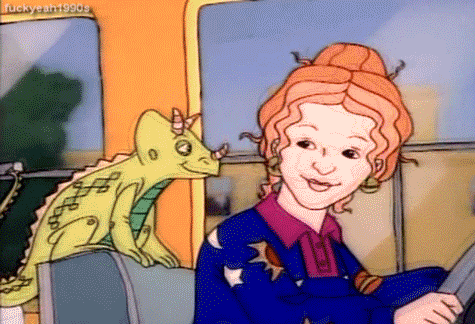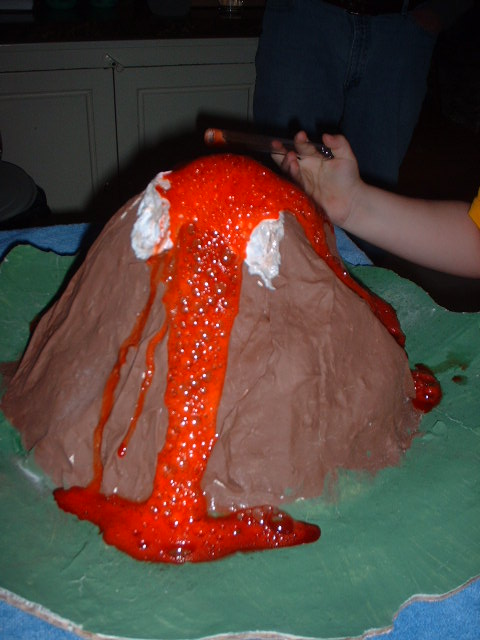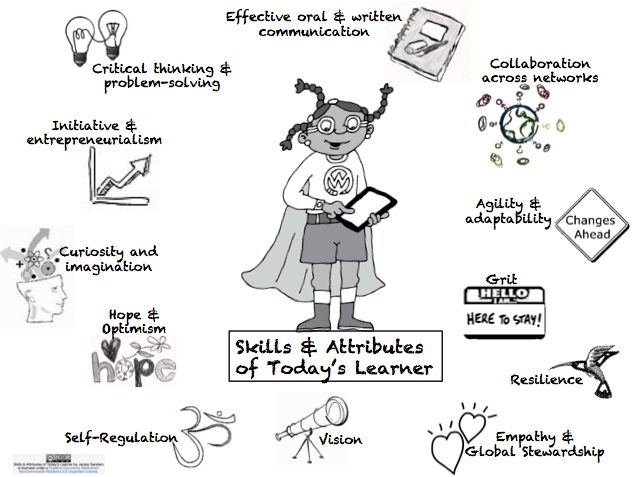 Teaching Science and Technology allows
teacher candidates to explore and teach science through the use of technology
inside the classroom. The candidates work in a group of six and collaborate
idea's to form a lessons to teach the class. As a group they explore technology
based options that will assist in the expansion of their lesson.
Collaboratively with my group, I created an inquiry and cooperative lesson plan
on Rocks and Minerals to teach a 6th grade class.
Teaching Science and Technology allows
teacher candidates to explore and teach science through the use of technology
inside the classroom. The candidates work in a group of six and collaborate
idea's to form a lessons to teach the class. As a group they explore technology
based options that will assist in the expansion of their lesson.
Collaboratively with my group, I created an inquiry and cooperative lesson plan
on Rocks and Minerals to teach a 6th grade class.
During my first experience teaching the
class, I taught an inquiry lesson about Rocks and Minerals. This lesson was
designed for the student to explore the properties of minerals by performing
tests and experiments on various specimens by following the steps of the
inquiry process.

The students explored the characteristics of minerals through
visual observations and performing experiments. The students discovered which
minerals were in their bag based on the evidence they collected. The student
learned how to collect evidence, analyze, make inferences and effectively come
to a conclusion based on the evidence they collected. The students were given a
scientific bag containing minerals and a chart, the students were instructed to
write a conclusive statement based on a rubric about which minerals were in
their bag they were evaluated by thus rubric. Students were divided into groups and worked as a team to identify two minerals
in their mystery bag. The students learned how to identify minerals and
classify rocks. The students followed the steps of the multi-step procedures of
the scientific method to solve the mystery. The students took measurements on
color, streak, hardness, luster, transparency and fracture versus cleavage.
I began by pre-assessing the content that
the student learned during our ice breaking activity. I gave students a handmade
sign I created as a tool to check for understanding. The sign had a green
thumbs up, meaning I understand or agree, and a red thumbs down meaning I
disagree or I don’t understand. I made use of the color green, meaning go, and
red, meaning stop, and used icons rather than words for the students who need
reading accommodations. I developed a slideshow that used minimal amounts of
words, instead I used pictures to go along with the topic I was describing to
accommodate to those visual learners. I assisted a student during our slide
show who is classified as ASD. She needed assistance following along, to
accommodate her needs my fellow teacher candidates continued teaching the class
at a typical speed while I worked independently with the student until the
direct instruction was complete. At this point we introduced the students to
our Voki, Ms. Mineral. The voki presented a problem, she had recently
discovered a large amount of minerals but she needed help identifying them. The
students were asked to help her identify her new discoveries. To accommodate
students with auditory processing disorders or students who are visual or
kinesthetic learners we provided the students with a typed letter from Ms.
Mineral stating the same things she presented in her recording.
I divided students into groups of three
forming six different groups. Teacher candidates were stationed at each group
and helped facilitate the tests on the mineral samples. Each group identified
the color, streak, hardness, luster, and fracture/cleavage of each sample and
noted these identifiers on their Mineral Identifier Chart. I supported and
monitored the student’s interactions within my group. I assigned roles to each
individual student and allowed all students to review the results of each test
and come to a group decision. After performing the tests, the students compared
their charts to the reference booklet information in order to identify which
mineral samples they had. After the given time and all groups are finished, I gained
students attention towards the front of the classroom.
 I expected students to present their
finding in front of the class. I explained the behavior expected by presenters
and the audience. The student reported their findings about the rocks and minerals
by telling the class what they had in their scientific mystery bags. One person
from each group was assigned as the speaker, they were responsible to tell the
rest of the class the name of the mineral and to share how they came to that
conclusion and explain the steps they took to come to the final result. As an
independent practice students wrote a letter to Ms. Mineral. In their letters,
the student were responsible for telling Ms. Mineral what minerals were in
their bag and what tests they conducted to find out which they had. The student
were given a rubric and were graded based off thus rubric.
I expected students to present their
finding in front of the class. I explained the behavior expected by presenters
and the audience. The student reported their findings about the rocks and minerals
by telling the class what they had in their scientific mystery bags. One person
from each group was assigned as the speaker, they were responsible to tell the
rest of the class the name of the mineral and to share how they came to that
conclusion and explain the steps they took to come to the final result. As an
independent practice students wrote a letter to Ms. Mineral. In their letters,
the student were responsible for telling Ms. Mineral what minerals were in
their bag and what tests they conducted to find out which they had. The student
were given a rubric and were graded based off thus rubric.
The lesson was based off of an
introduction, introducing the topic to the class and giving direct instruction
about the topic. The lesson developed through the use of Ms. Mineral when the
mystery was introduced. Students were evaluated by their ability to evaluate
and collect data based on the scientific
method for their minerals. Students
were given an independent
task in order to check for understanding.
During my second experience teaching the
class, the students had a mineral show. This lesson focused on expanding the
student's knowledge of identifying minerals by engaging them in cooperative
learning in a group task. At this point the students will have learned about
the characteristics of minerals and how to identify an unknown mineral
specimen. They should also know that geologists perform tests on minerals to
identify them. During this lesson the students demonstrated an understanding of
how to research and identify minerals and present their ideas to the class. The
students gained a better understanding of the mineral they identified. The
students learned how to work together to complete a group task. Based on their
mineral discoveries from the prior class the students had to research the
mineral and create an advertising poster about their mineral. The students then
had to vote for the mineral they would be most likely to buy based off of the
poster created. The students were given a mineral, mineral information card,
poster board, craft supplies, and a task to work in a group of geologists.
Student created an advertising poster promoting/advertising their mineral.
Students followed the criteria illustrated on the rubric. To prove mastery the
students had to receive at least a 3 out of 4 on each section to prove their
understanding, each student proved mastery.
I introduced the topic by reviewing the
content. I explained to the students that they will be working in their
geologist groups to advertise their mineral at a mineral show. I explained that
a mineral show is when many geologists from all over the world come together to
try and sell their minerals. I supplied the students with pictures of what a
real mineral show looks like. This helped the visual learners visualize what a
mineral show actually looks like. I explained that their task is to work
together to use the information provided to create a poster promoting their
mineral at the show. Teacher candidates joined groups to assist in student
collaboration. To monitor cooperative learning I rotated from group to group
making sure the students are effectively working together and collaborating. I
facilitated individual accountability by explaining that each student has a
specific role within their group. I made it known to the students that they
each must complete their role effectively and are individually contributing to
the success of the group. I fostered
positive interdependence by explaining how each role is very important when
working together in a group. I explained to the student that each group member
will have a specific role and you all depend on each other when working toward
the common goal. I also made it clear that the success of the group is dependent
on the participation of all group members, that each role is important in order
for the group to successfully complete the poster. Group processing was
facilitated by having the students work together in their small groups. The
students, working together to achieve the same goal, are responsible for their
own work and the groups work as a whole.
The students reflected on how their groups worked together on their
independent practice assignment by answering the question “How did you and your
group member’s work together to complete the poster?” Face-to-face interaction
was encouraged by having the students working together and giving each student
a role. During the face-to-face interaction the students provided feedback to
their peers as well as encouragement and motivation. During this lesson the
student developed multiple social skills. One of the social skills was working
together and collaborating. Working together and collaboration requires
listening, turn taking when speaking and cooperation among all group members.
Another social skill the students developed is presentation skills. After
creating their advertisement, they presented their poster.
 As an independent practice the students
filled out a raffle ticket stating which mineral they would buy and why they
want to buy that one. The ticket will also ask them to identify their role in
their group and how their group worked together to complete the task. We
concluded with a class vote on which mineral is most useful.
As an independent practice the students
filled out a raffle ticket stating which mineral they would buy and why they
want to buy that one. The ticket will also ask them to identify their role in
their group and how their group worked together to complete the task. We
concluded with a class vote on which mineral is most useful.
Teaching Science and Technology allows the
teacher candidates to explore and teach science through the use of technology
inside the classroom. As a group I collaboratively worked with the teacher
candidates in my group to create and execute two interactive lessons on rocks
and minerals. The students mastered the goals based on our lessons. We followed
the steps of inquiry to form sequentially based lessons that would assist
students learning the topics.

























